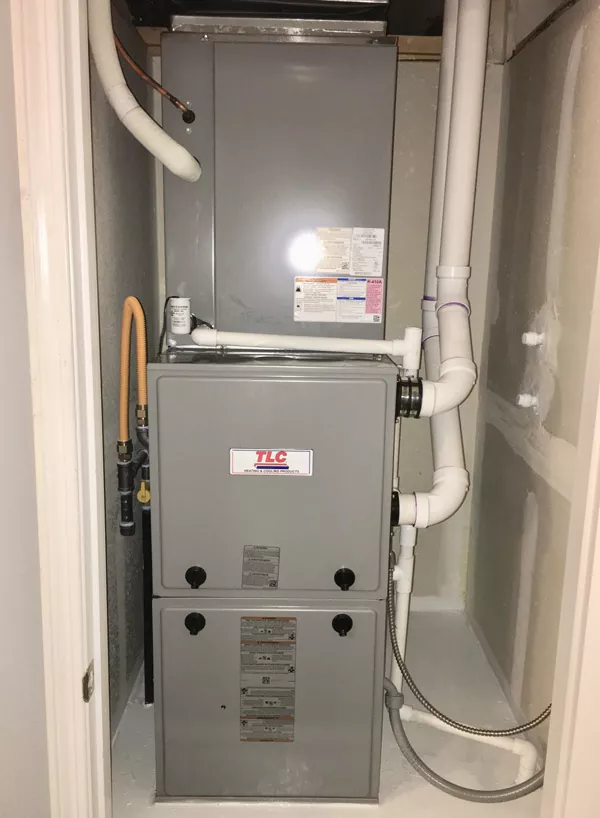HVAC Portland: Top-rated heating, ventilation, and air conditioning services
HVAC Portland: Top-rated heating, ventilation, and air conditioning services
Blog Article
The Ultimate Guide to Furnace Setup for a Cozy Home
Heater installation is a critical facet of maintaining a comfortable home environment, specifically during the colder months. As you take into consideration these elements, the concern remains: what steps can you take to guarantee your heating system offers you well for years to come?
Sorts Of Heating Systems
When thinking about heating system installment, recognizing the various kinds of heating systems readily available is important for making a notified choice. The main kinds of furnaces consist of gas, electrical, and oil furnaces, each offering distinctive benefits and factors to consider.
Gas heaters are the most typical choice because of their efficiency and reduced operational prices. They use natural gas or gas, offering fast heating and consistent efficiency, making them suitable for colder environments.
Electric furnaces, while typically much easier to install and preserve, tend to have greater operational expenses. They are frequently favored in locations where gas service is inaccessible or for homes with existing electric framework.
Oil heating systems, though less common today, continue to be a sensible alternative in certain areas. They shed home heating oil, which can be beneficial throughout chillier months, but their reliance on oil shipment poses prospective challenges.
Additionally, there are high-efficiency versions available across these types, which can considerably reduce energy usage and energy bills. Ultimately, understanding these furnace kinds will help home owners pick a system that aligns with their home heating needs, spending plan, and power choices.
Selecting the Right Dimension
Choosing the appropriate size for a heater is vital to ensuring ideal performance and power effectiveness. A small heating system will certainly battle to keep comfortable temperatures during the cold months, resulting in boosted damage, greater power bills, and possible system failure. Alternatively, an oversized heater may cycle on and off as well regularly, leading to ineffective heating and irregular temperature circulation within the home.

Furnace sizes are usually measured in British Thermal Units (BTUs), which suggest the amount of power called for to heat up a space. It is recommended to speak with a certified cooling and heating professional that can perform the needed estimations and suggest a properly sized system. furnace repair. Investing in the appropriate heater size not just enhances convenience yet likewise adds to long-lasting power savings and system integrity
Installation Process Overview
Once the suitable furnace dimension has been determined, the next step includes understanding the installation procedure. This procedure commonly begins with a thorough analysis of the installation site, including the existing ductwork and air flow systems. Correct preparation is important to make certain seamless combination and ideal efficiency of the brand-new heating system.
The setup normally consists of disconnecting the old unit, which includes safely removing any kind of electric links, gas lines, and ductwork affixed to the previous furnace - furnace repair. When gotten rid of, the new heating system is meticulously positioned and leveled, ensuring that it satisfies the manufacturer's requirements for optimal procedure
Next, the installer will certainly attach the necessary gas and electrical lines, sticking to neighborhood codes and safety regulations. Following this, ductwork might require to be changed or replaced to suit the new system, ensuring reliable airflow throughout the home.

Necessary Tools and Materials
Gathering the necessary devices and see it here materials is crucial for a successful heating system installation. Correct preparation makes sure that the installation process is reliable and lessens the capacity for mistakes.
Secret devices required include a drill, screwdrivers, wrenches, pliers, and a degree. A multimeter is vital for electric connections, while a pipeline cutter and adjustable wrench are needed for gas line installation. In addition, a tape action and a stud finder will certainly assist in guaranteeing precise placement and safe fastening of the heater.
In regards to products, you will require ductwork, insulation, and sealing tape to guarantee optimum air flow and power performance. It is also vital to have a new heater filter handy, along with airing vent products, such as PVC pipeline or steel flue, depending on the sort of heating system being set up.
Safety and security tools, including handwear covers, goggles, and a face mask, helpful site is additionally critical you could check here to safeguard versus dust and debris throughout setup. Having all these tools and products readily available not only streamlines the procedure yet also improves the security and performance of the heating system installation.
Upkeep Tips for Durability
To ensure the long life of your furnace, it is important to apply a regular upkeep timetable that attends to vital components of the system. Beginning by changing or cleaning up the air filter every one to three months, as a clogged up filter can restrict air movement and decrease efficiency. In addition, check and clean up the blower setting up to stop dust build-up that can hinder performance.
Next, check the thermostat setups and alter if necessary to ensure exact temperature guideline. Inspect the ductwork for leaks or obstructions, as this can lead to energy loss and unequal heating. Consistently lube the electric motor and bearings according to the producer's recommendations to decrease wear and tear.
Professional inspections should happen each year, where a certified technician can analyze the furnace's overall condition, look for gas leakages, and ensure that security functions are operating appropriately. Lastly, take into consideration setting up a programmable thermostat to optimize energy use and preserve constant home temperatures. By taking on these upkeep practices, you can improve your furnace's efficiency, prolong its lifespan, and ultimately enjoy a comfortable and comfy home environment.
Conclusion
Reliable heater installment is essential for attaining optimal home convenience and energy efficiency. Understanding various heater kinds and picking the proper dimension makes sure correct capability.
Report this page